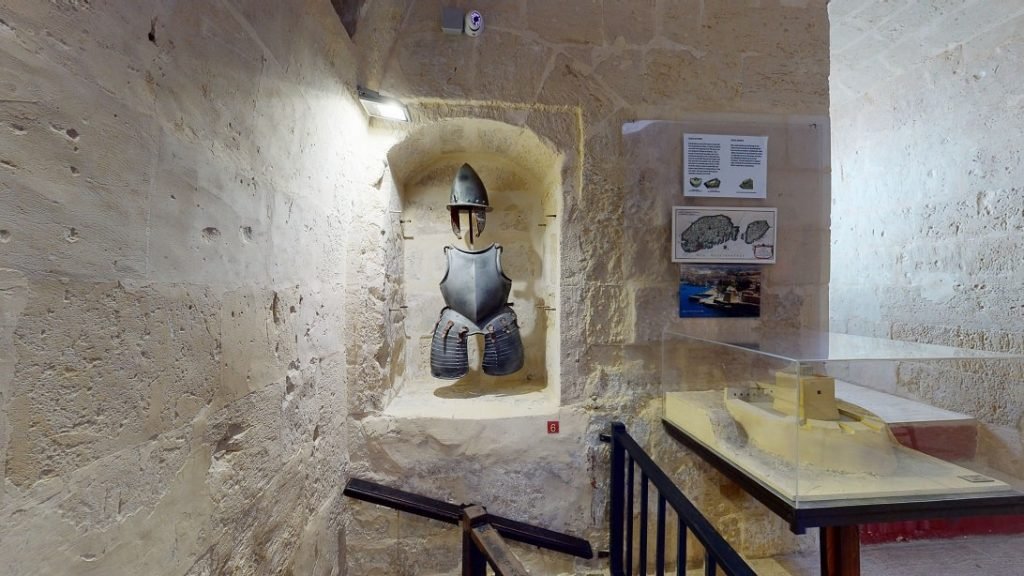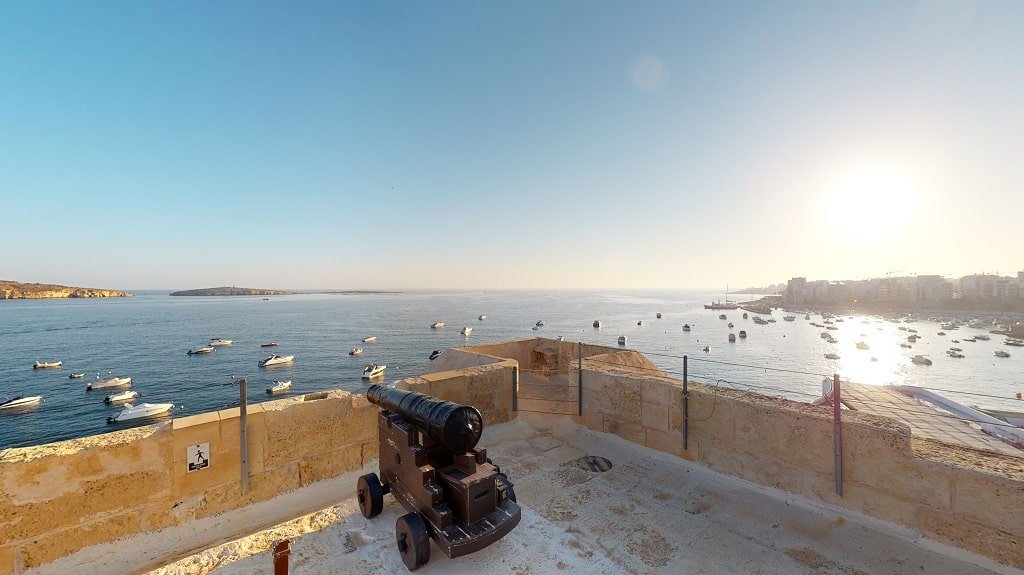
WELCOME!
to
Wignacourt Tower
An exciting step back in time. Experience what life was like for the soldiers stationed here, while protecting our island.

Grand Master Alof de Wignacourt (1601 – 1622) personally financed the construction of 6 coastal towers to defend the coastline of Malta. The first erected was the tower at St Paul’s Bay in 1610 and was named Wignacourt Tower in honour of the Grand Master. The Knights of Malta had already constructed a Coastal Tower in 1605 at Mgarr Gozo. This was demolished in 1845 meaning that Wignacourt Tower is today, the oldest surviving coastal tower on the islands. For 39 years, it remained the only northern defence post until the Red Tower was erected in 1649.

The original entrance to the tower was at first floor level. This was accessible through a stone staircase leading to a drawbridge located in front of the entrance door. The stone staircase was sadly demolished in the early 1960’s as it was hindering street traffic flow.
The soldiers’ living area was at first floor level. The room at ground floor served as a storage area. This was accessible through a trap door, now replaced by a spiral staircase and descending by means of rope or ladder.
Luxurious domestic commodities for those times were included in the construction of the tower. A fireplace complete with chimney, a toilet and a fresh water well are still in place. A unique feature in Malta for early 17th century defensive posts is present at first floor. This is made up of the original wooden entrance door complete with its original door lock and key.

The garrison of Wignacourt Tower, which was commanded by a master bombardier, kept watch for signs of approaching enemy ships. In 1715 a coastal battery was added to the tower to increase its fire power. The tower’s armaments throughout most of the eighteenth century consisted of three 6-pounder iron cannons, similar to the one deployed on the roof and three 18-pounder iron cannons placed on the battery at the foot of the tower on its seaward side.
Today, the ground floor room houses a permanent exhibition about the construction of fortifications in Malta since written history. At first floor a small museum details and describes the tower’s unique features and other coastal fortifications in Malta.

The Tower roof offers spectacular views over St Paul’s Bay. During 2019, Din l-Art Helwa and re-enactors from the group Show Of Arms restored the Knights period cannon located here. It was officially fired, after centuries of silence, on the 10th February 2020 to commemorate the 410th anniversary from the laying of the Tower’s first foundation stone. This is the oldest original cannon restored to firing conditions in Malta.
Fra Alof de Wignacourt (1547 – 14 September 1622) was a French nobleman who was the 54th Grand Master of the Order of St. John of Jerusalem from 10 February 1601 to his death in 1622. Unlike a number of the other Grand Masters, he was popular with the Maltese people. Wignacourt is mostly remembered for the construction of the Wignacourt Aqueduct as well as a series of coastal towers which also bear his name.

1601 Grano coin of Wignacourt
Wignacourt joined the Order in 1564, aged seventeen, and distinguished himself at the Great Siege of Malta a year later. He was elected Grand Master in 1601.
In order to ensure that the local population continued to celebrate the date of his accession, he declared the date of the shipwreck of St Paul in Malta to be the 10 of February; a date that is celebrated passionately until today.
He was patron of Caravaggio following the artist’s arrival in Malta in 1607 until his arrest and subsequent expulsion from the Order in 1608.